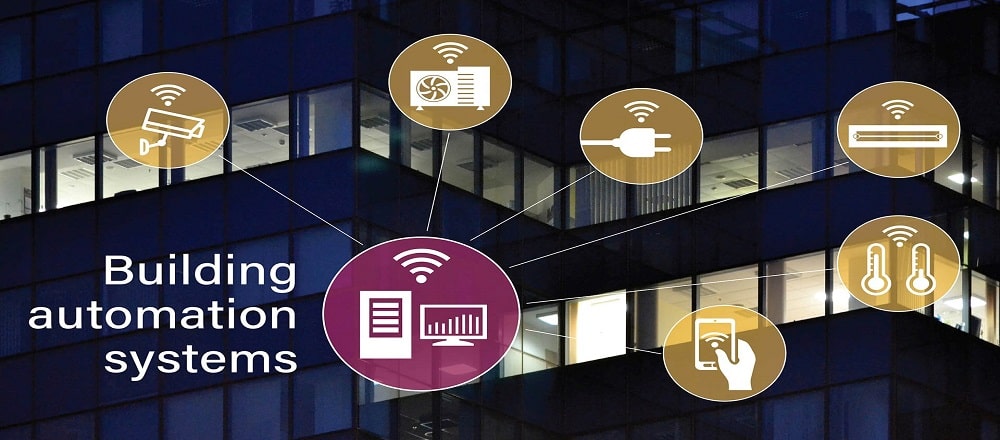The building sector contributes significantly to greenhouse gas emissions and energy consumption. Ensuring energy efficiency in buildings is crucial for a sustainable future. Building automation system (BAS) can ensure these goals. These advanced systems can control and monitor a building’s mechanical, electrical, plumbing, and other systems.
BAS uses sensors, controllers, and software to gather data about the building and makes adjustments to building systems based on pre-programmed or real-time conditions. If you want to ensure energy efficiency and sustainability goals, you need to install BAS in your building today!
How Does Building Automation System Impact Energy Efficiency?
Building automation systems (BAS) contribute significantly to energy efficiency goals. It controls and monitors equipment and systems within a building, such as heating, ventilation, air conditioning (HVAC), lighting, and security. Energy consumption and costs can be reduced and building performance can be improved by optimizing BAS.
BAS contributes to energy efficiency through:
· Improved HVAC efficiency
HVAC systems can be monitored and adjusted through the building automation system. It is based on occupancy, temperature, and other factors. It leads to more efficient operation and a reduction in energy consumption.
· Lighting Control
With BAS, lighting levels can be automatically adjusted according to daylight, occupancy, and the time of day. It ultimately reduces energy consumption.
· A reduction in peak demand
The BAS can reduce energy costs by controlling HVAC and lighting systems during peak usage periods.
· Predictive equipment maintenance
The BAS is also used to monitor equipment and systems to detect potential issues that can result in equipment failure. It allows for timely maintenance, preventing more serious problems and prolonging the life of building assets.
· Monitoring and analysis in real-time
Not just providing real-time information about the building’s performance, the BAS also measures its energy consumption. In addition to identifying areas of inefficiency, these data also improve efficiency and reduce energy consumption.
Building automation systems do have a significant role to play in ensuring energy efficiency in facilities. By optimizing building systems and equipment, BAS reduces energy consumption and costs, improves building performance, and contributes to a sustainable future.
How Does Building Automation Systems Contribute to Sustainability?
Not just ensuring energy efficiency, Building Automation Systems (BAS) greatly reduce energy consumption, improve the performance of buildings, and reduce their environmental impact. Let’s understand how:
· Energy Efficiency
As described earlier, BAS optimizes the performance of building equipment and systems. It helps reduce the building’s carbon footprint and preserve natural resources.
· Indoor Environmental Quality
The BAS improves indoor air quality by monitoring and adjusting ventilation rates and managing humidity levels. It increases productivity and reduces absenteeism as occupants feel comfortable in an indoor environment.
· Renewable Energy Integration
The BAS can be integrated with renewable energy systems such as solar panels, wind turbines, and geothermal systems. It allows for maximum energy savings and decreased dependency on fossil fuels.
· Water Conservation
The BAS can monitor and detect leaks. At the same time, it controls irrigation systems, which can contribute to water conservation.
· Sustainable Operations
Integrated building automation systems can lower maintenance costs and prolong the life of equipment by optimizing building performance. Ensuring sustainable operations becomes possible with BAS.
Building Automation Systems significantly contributes to sustainability initiatives. The time has come for industries to recognize their power and install BAS in their facilities to build a sustainable, green future.
Implementing Building Automation Systems In Facilities for Energy Efficiency and Sustainability
Automated building systems can improve the efficiency of your building. To achieve energy efficiency and sustainability in your facility, carefully plan and execute the implementation of BAS. Follow these steps:
1. Conduct a Building Energy Audit
Assess the building’s energy efficiency and potential for energy savings by conducting an energy audit. As part of the audit, systems, and equipment in the building should be reviewed, along with energy use patterns and potential energy-saving measures.
2. Set Energy Efficiency Goals
Reduce energy consumption by a certain percentage or achieve green building certification by setting building energy efficiency goals.
3. Select the Right BAS Solution
Make sure the building’s BAS meets its energy efficiency goals and provides all the necessary features and functionality. Take into account factors such as ease of use, integration with existing systems, scalability, and maintenance requirements.
4. Install and Configure BAS
Assemble and install the BAS system, ensuring that it is seamlessly integrated with the existing building systems. Performance and energy consumption should be optimized in the BAS system.
5. Train Building Staff
Educate building staff on how to use and maintain the BAS system. It includes learning how to interpret data provided by the system, adjusting settings, and troubleshooting problems.
6. Monitor and Analyze Performance
Utilize BAS data to continuously monitor and analyze the building’s performance. Further energy savings can be achieved by identifying areas of inefficiency and improving efficiency.
7. Adjust and Improve
Analyze and optimize the energy efficiency and sustainability of the BAS system using the performance data.
Building owners, managers, and occupants must work together to implement a Building Automation System for energy efficiency and sustainability. It will help them save energy, reduce environmental impact, and create more sustainable buildings. If you want to install a building automation system in your facility, connect with Zenatix. It offers advanced IoT solutions to industries.





